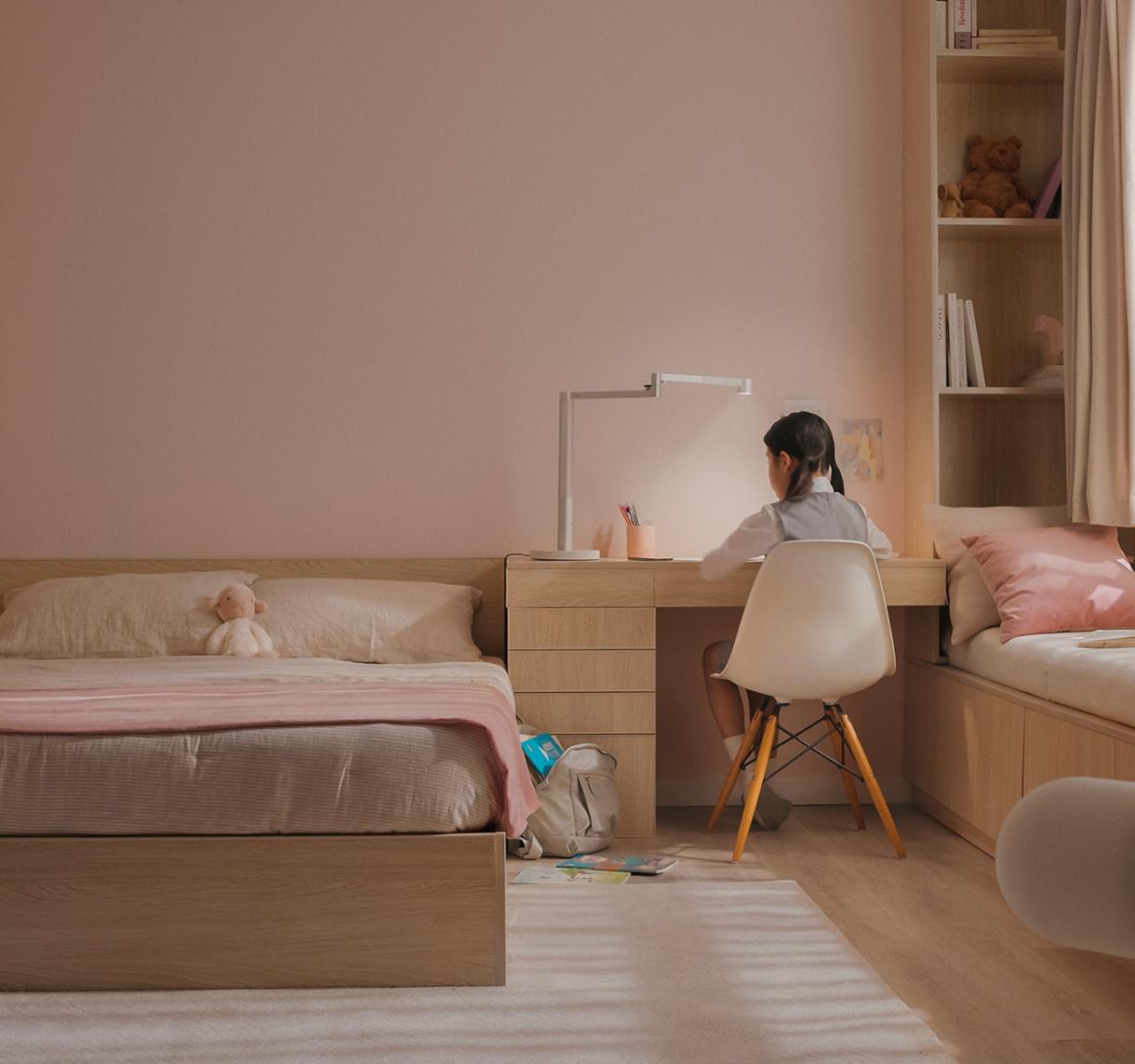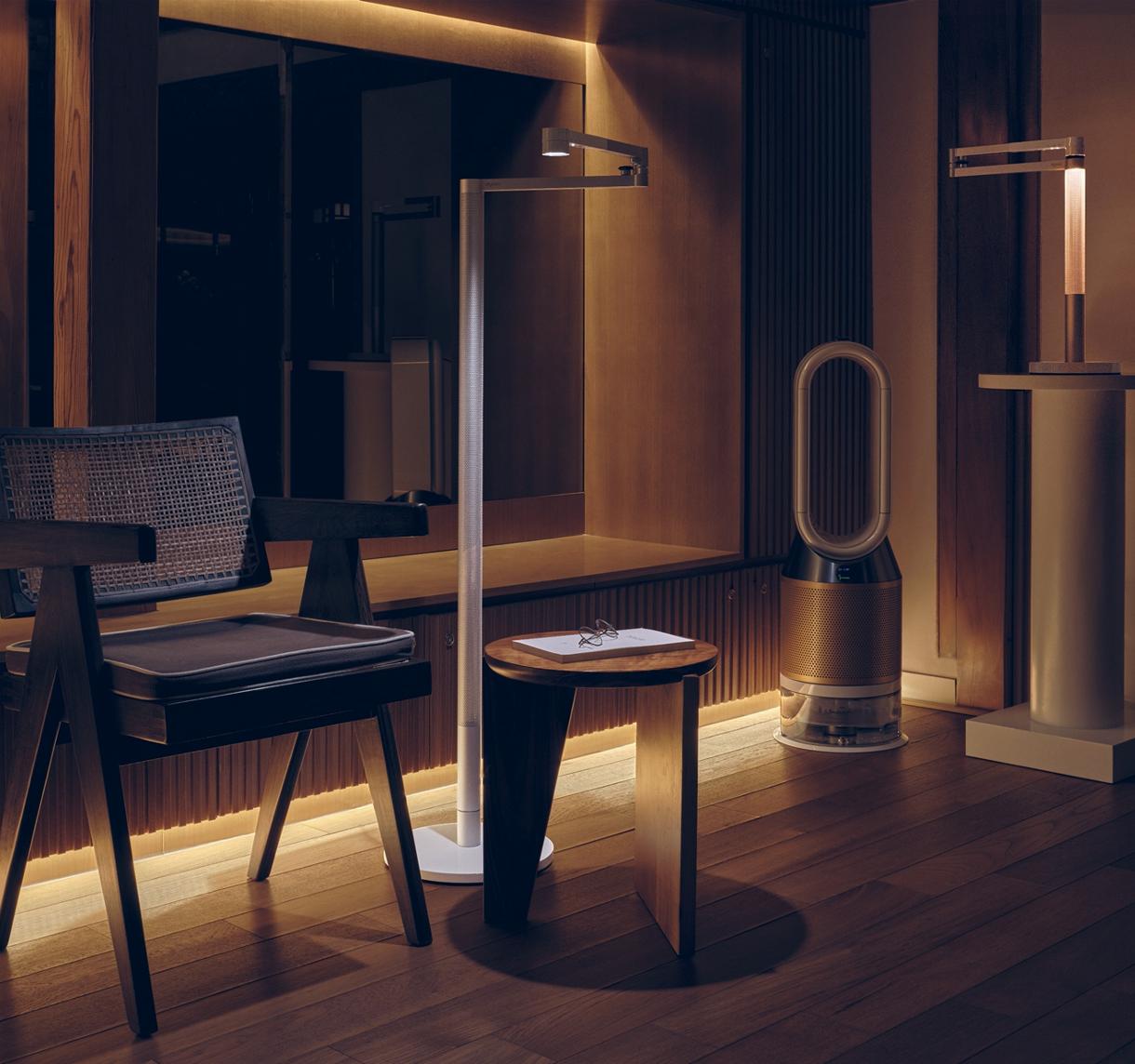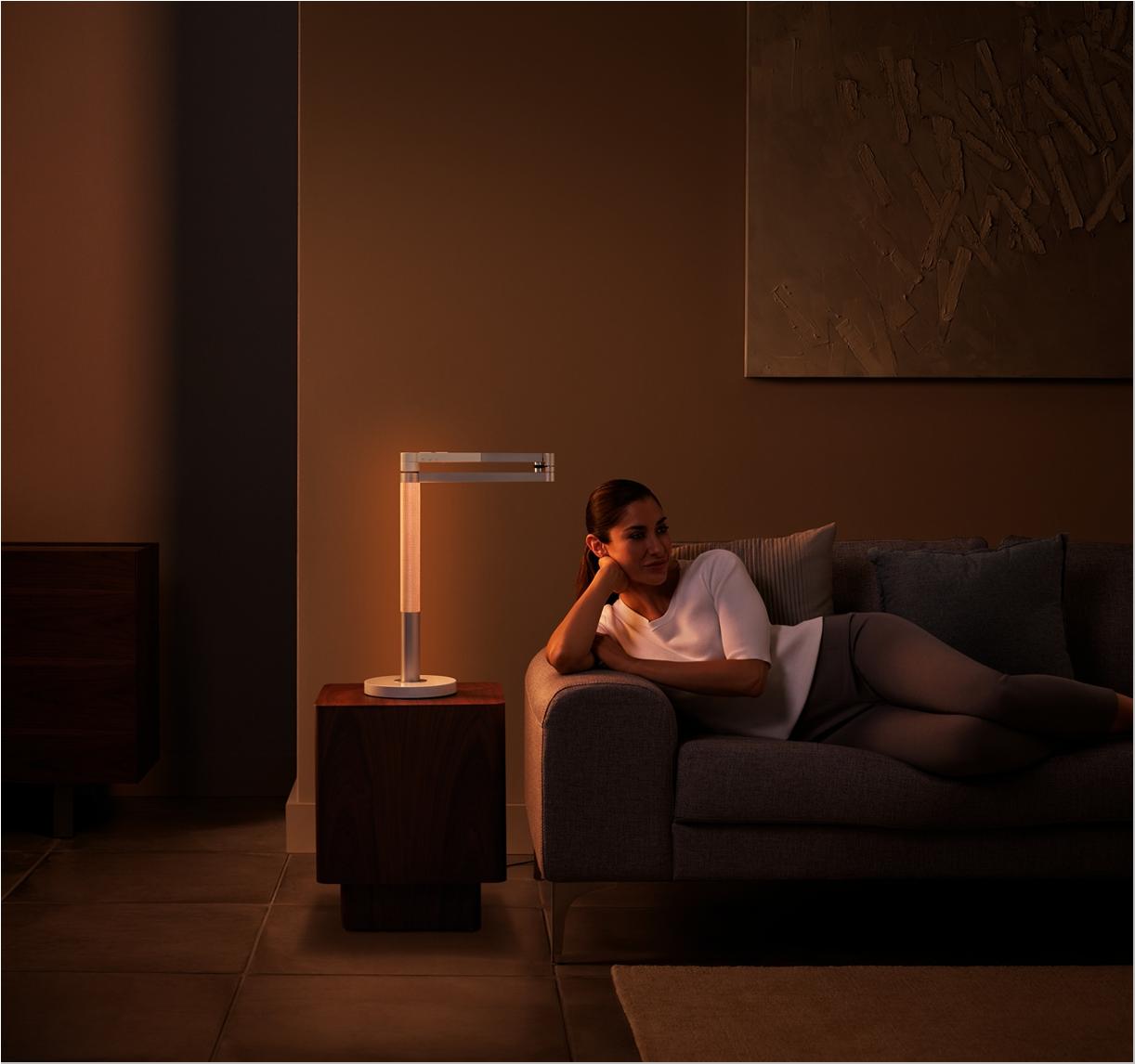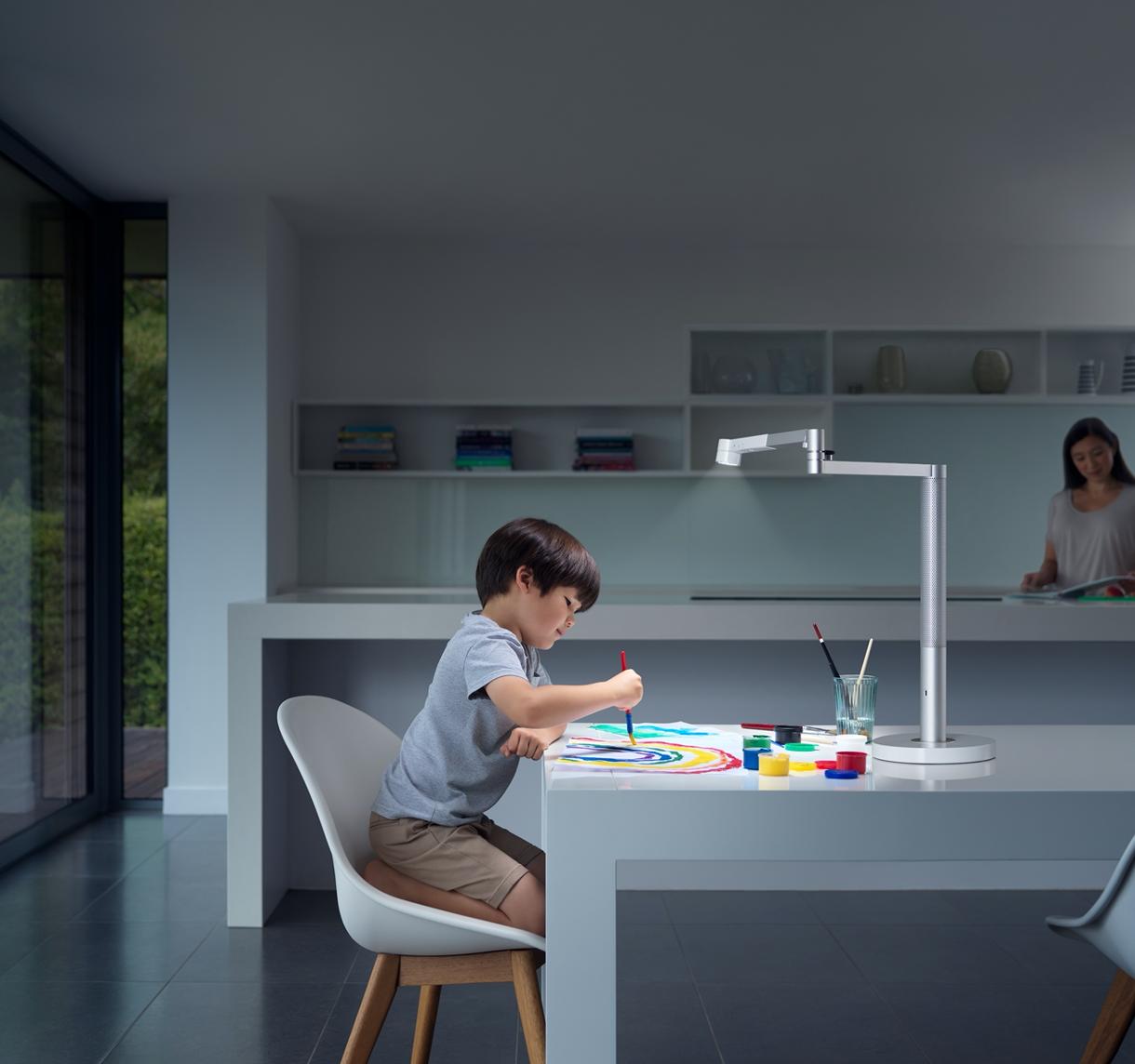

Desktop light | Dyson
Dyson engineers share their advice for setting up their homes for optimal light throughout the day with desktop lights.
With clocks going forward shortly, the change in daylight hours can affect our sleep patterns. It is not often understood how this shift in our social clock, but not the sun clock, affects the way we feel and how our body functions. Dyson engineer's explains; “Our body clocks have evolved under the daily pattern of daylight. In fact almost all physiological functions from protein production and our metabolism to sleep patterns are under the control of the body clock.” As we continue to work and parent from home, here are some handy tips on how to use light to create more comfortable spaces for activities throughout the day.
Tip 1: Create a designated space
-
“Light plays an important role in signalling that a particular part of the room has a specific purpose. While building regulations make sure that office environments provide adequate levels of light, lighting in home offices is often overlooked.”
- Take control of the lighting around you. Play with various options until you find the ideal personalised setup.
- Consider how light falls around the entire room, not just directly around the light fitting.
- Be conscious of the position of lights. Natural light coming through windows or spotlights reflecting off a computer screen could cause glare and eye strain, making it harder to focus.
- When on conference calls avoid sitting in front of a window. It could require the person at the other end of the line to strain in order to see you properly.
-

Tip 2: Choose the right light format for your activity
-

-
“Our research shows that people tend to use their home lighting in four ways: indirect light for general illumination, task light for high-precision work, feature light to accent features like artwork, and ambient light for a soft relaxing glow in the evening. Despite this, although countless types of lighting fixtures are found in the average home, each light typically only does one thing.”
- Think about the atmosphere you want to achieve for the room and precisely what you want to do in it.
- Ensure you still have the right level of light for your task - if you want a cosy dim light to read under, make sure it still delivers enough light so you don’t get eyestrain.
- Not all light is equal. For intricate tasks such as applying nakeup at your dressing table, consider an artificial light with a high colour rendering index (CRI). The higher the CRI, the closer colours would appear as though under daylight.
Tip 3: Rest!
-
“We all want to stay focused when working from home, but it’s vital to give your eyes rest. Forcing the eye to concentrate on a small region for a prolonged period of time, by reading a book, driving, using a computer screen, often fatigues the eye muscles leading to eye strain. This is a slightly uncomfortable sensation for some and the cause of headaches for others. The symptoms of eye strain can also be caused by flicker and glare from light sources. Without realising it, the screens that we use are often either too bright or not bright enough, causing glare. We can tolerate a degree of glare, flicker and eye strain, but working for eight hours a day under these conditions is really straining on the muscles around your eyes. “
- Adjust the brightness of your devices to provide a comfortable light. Adjust your text size if reading for prolonged periods.
- Look up from your screen and give your eyes a rest now and again.
-

Tip 4: Create a daylight routine
-

-
“Daylight is the gold standard when it comes to providing the right light for your tasks throughout the day. We have evolved to live and work under daylight’s changing brightness and colour temperature, regulated by cycles of day and night. In contrast, indoor light is often the same brightness and colour all day. This ultimately can impact how we feel and function. Daylight makes us feel more alert and is also the main signal to our body clock. It gives us our internal sense of time. Circadian rhythm (our body clock) also influences the inner workings of our whole body including our metabolism and our activity patterns. An extreme example of what happens when our internal clock is out of sync is jet lag.”
- Kick-start your day with a walk outside. This burst of early morning daylight exposure will anchor your body clock to the pattern of local daylight – signalling that the day has begun and providing a subconscious schedule to your day.
- Consider interior lighting that gives you the ability to vary the light temperature (cool to warm light) and brightness for the time of day. Set up your working area near a window or in another naturally well-lit space.
- Start an evening routine of manipulating the light around you to create a relaxing environment – signalling to your body that the night is drawing in.
Tip 5: Give your eyes the light they need
-
“As we get older our eyes change. The muscles that control pupil size get weaker and let less light in, and the lens hardens. These changes mean that, according to the IES, people over 65 need four times the amount of light compared to someone who is under 25.
As well as weaking muscles, the lens of the eye gradually yellows which affects colour perception. This yellowing lens absorbs and scatters blue light, making it difficult to see differences in shades of blue, green and violet. Colours may seem duller, and contrasts between colours will be less noticeable.”
- Ensure you have bright enough lighting as your eyes age.
- Bulbs with a CRI above 80 may best help older eyes with colour definition.
-






